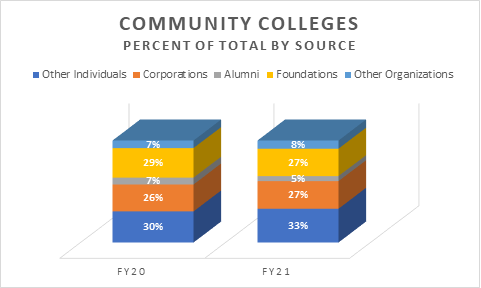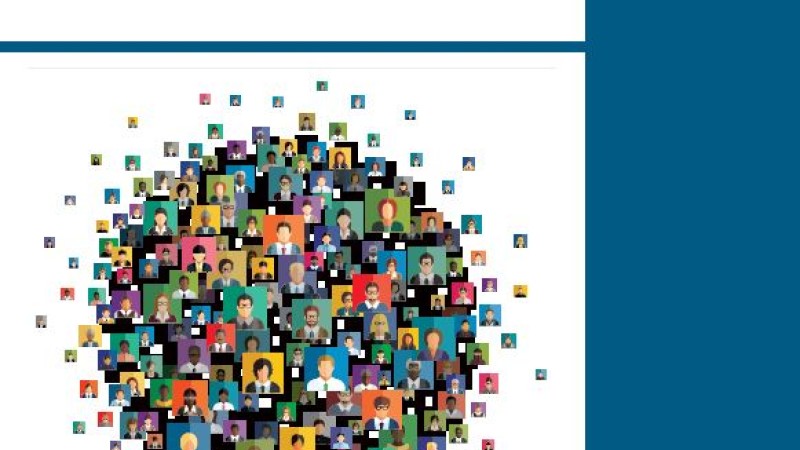The Advancement Angle: What's Driving Community College Giving?
According to the most recent results from the Voluntary Support of Education Survey, CASE estimates that colleges and universities in the U.S. raised $52.9 billion during the 2020-2021 fiscal year, up from $49.5 billion the previous year.
Community colleges, however, experienced a net increase of 52.5% over that same period of time, thanks in large part to transformational gifts from MacKenzie Scott, American novelist, philanthropist and ex-wife of Amazon founder Jeff Bezos. But if you exclude her gifts, how did community colleges fare?
To date, Scott has given away more than $12 billion since her divorce from Bezos; $2.73 billion of that total was gifted in the form of unrestricted grants to 287 nonprofit organizations as of June 16, 2021. Twenty-one of those recipients were community colleges or community college-related groups.
But Scott’s generosity heavily skewed the data for community colleges. After excluding her gifts as outliers within the 2020-2021 cohort of participating institutions in the VSE survey, community colleges showed an overall increase of 3.7% raised from private voluntary support, including corporations, alumni, other organizations, foundations and other/non-alumni individuals. On a national level, giving from Alumni showed the strongest growth (10.8%), followed by Other Organizations (9%).
The “other organizations” category, which is dominated by donor-advised funds (DAFs), surpassed corporations for the first time last year. This pattern continued in the current survey cycle.
However, for a number of these giving sources, community colleges reported a markedly different trend.*
- Giving from Other Individuals increased by 16% versus the national increase of 2% for all of higher education.
- Alumni giving, on the other hand, experienced a significant decrease of 22% among community colleges compared to the national increase of 11%.
- Also of note: there was a slight 1% decrease among Foundations compared to 6% growth nationally.
There were also shifts in the composition of giving sources for community colleges. In both FY21 and FY20, Other (Nonalumni) Individuals contributed the most. But in FY21, Corporations grew to tie with Foundations at 27%. Giving from Other Organizations overtook Alumni, claiming 8% of total support raised, compared to a lower 5% from Alumni.

It would be interesting to further explore whether Other Organization growth among community colleges was also driven by DAF contributions, as seen in national trends. We look forward to further exploring the DAF subset further when it appears as a distinct donor type in the 2022 survey, which will also mark the point at which the new CASE Global Reporting Standards will also be applied.
Based on what we know about the economy in the first half of the 2022 fiscal year, CASE expects giving to continue to rise, but not at the same level as it did in 2021.
Are you excited to talk more about data or explore how you can apply CASE data and benchmarking to the benefit of your own advancement operations and fundraising plans? Check out your institutional Graphical Program Summary (GPS) Report or contact me at mwestenburg@case.org.
Interested in exploring more about transformative giving? Check out “Starting with Scott: An Exploration of Transformational Giving,” just one of many sessions of interest at the upcoming Conference for College and University Foundations, April 20-22, St. Petersburg, Florida.
*This and subsequent analyses performed exclude MacKenzie Scott recipient outlier data
About the author(s)
For more information about CASE's community college resources, contact Marc Westenburg, director, foundations and community colleges, at mwestenburg@case.org or +1 202-478-5570.

